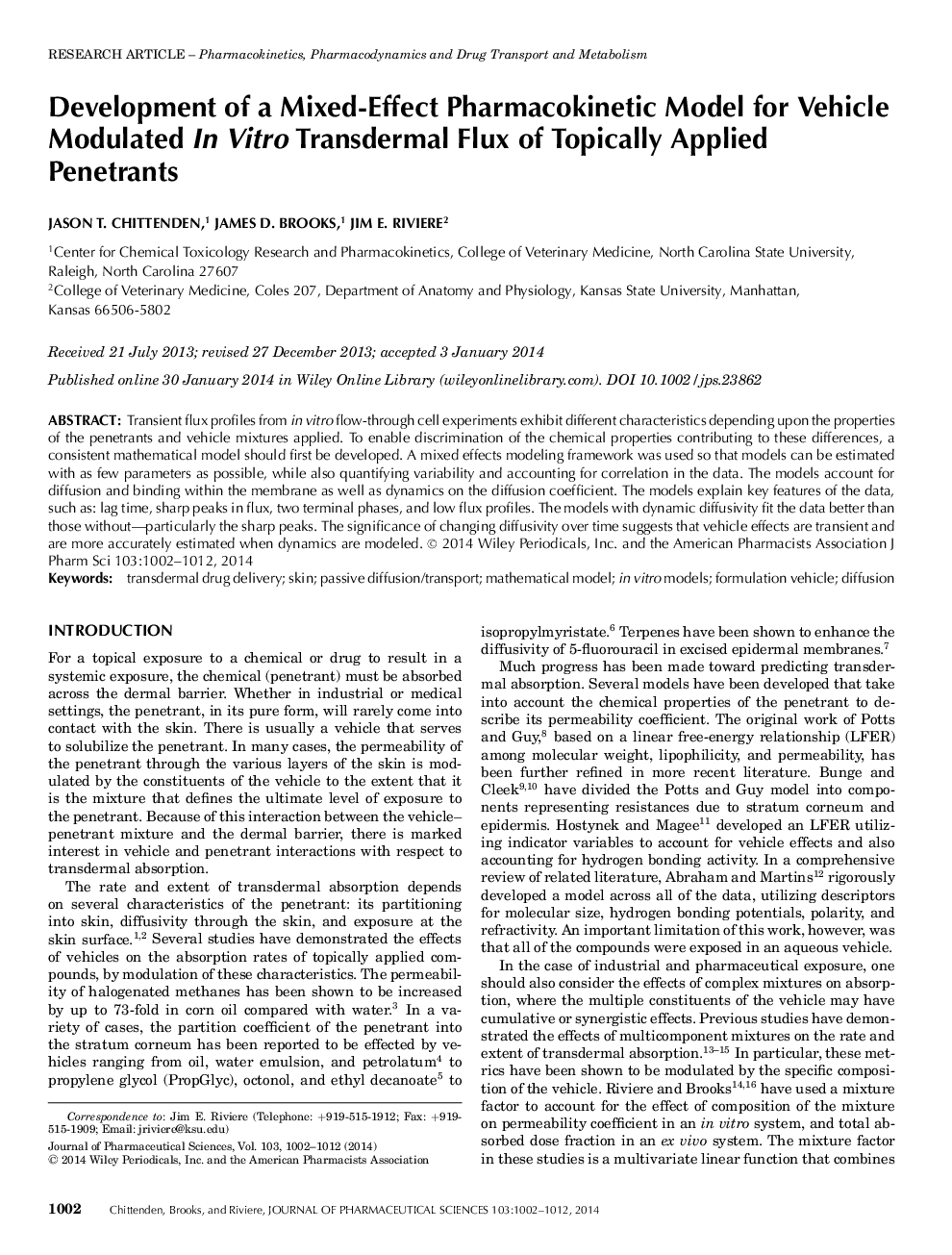| Article ID | Journal | Published Year | Pages | File Type |
|---|---|---|---|---|
| 10162576 | Journal of Pharmaceutical Sciences | 2014 | 11 Pages |
Abstract
Transient flux profiles from in vitro flow-through cell experiments exhibit different characteristics depending upon the properties of the penetrants and vehicle mixtures applied. To enable discrimination of the chemical properties contributing to these differences, a consistent mathematical model should first be developed. A mixed effects modeling framework was used so that models can be estimated with as few parameters as possible, while also quantifying variability and accounting for correlation in the data. The models account for diffusion and binding within the membrane as well as dynamics on the diffusion coefficient. The models explain key features of the data, such as: lag time, sharp peaks in flux, two terminal phases, and low flux profiles. The models with dynamic diffusivity fit the data better than those without-particularly the sharp peaks. The significance of changing diffusivity over time suggests that vehicle effects are transient and are more accurately estimated when dynamics are modeled.
Keywords
Related Topics
Health Sciences
Pharmacology, Toxicology and Pharmaceutical Science
Drug Discovery
Authors
Jason T. Chittenden, James D. Brooks, Jim E. Riviere,
